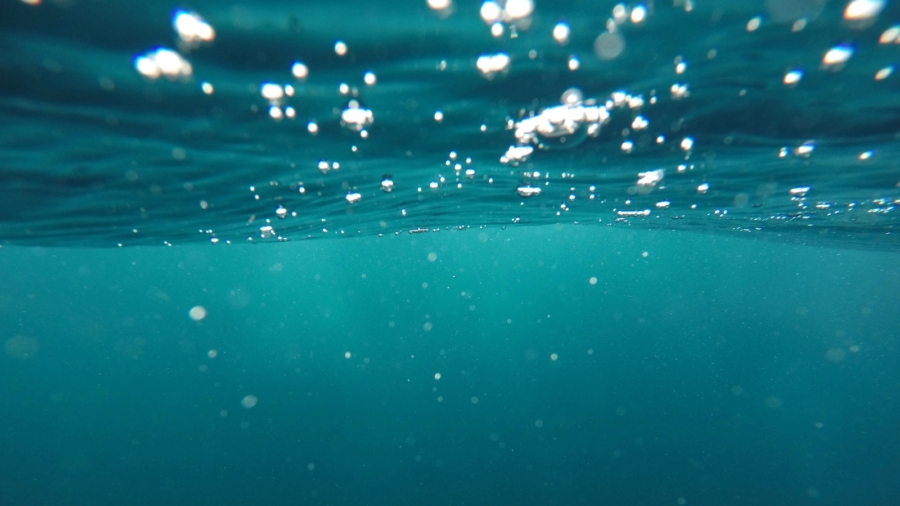The body of a teenage boy who got caught in a rip current while swimming with his sister in the ocean near Spring Lake, New Jersey, was recovered Wednesday.
At approximately 2:45 p.m. on Sunday, 15-year-old Josiah Jeremiah Robison of Ewing was in the water with his younger sister at Brighton Avenue Beach, reported NJ.com.
During the young brother and sister’s swimming excursion, a strong rip current appeared. A bystander and nearby lifeguards were able to rescue the young girl, Josiah however, was nowhere to be seen.
Officials soon closed the beach. Over 100 lifeguards, along with Jersey State Police boats and helicopters began to search for Josiah.
An extensive search that went well into the evening was later called off Monday morning, after producing no signs of the missing boy.
“Our heartfelt condolences go out to Josiah’s family and friends,” said Spring Lake police in a statement Wednesday. “Our department and community as a whole offer our deepest sympathies.”
Cynthia Baumgartner, a local resident who was present when the incident occurred said: “It was all I thought of all night. My whole family felt the same way. It’s the end of summer, but it just left everybody feeling so distraught over it,” reported App.
“We don’t know the family but our thoughts and prayers are with them, especially as a mother, it’s your worst nightmare,” she added.
According to App., A memorial for the boy was set up at a nearby gazebo, where family members and local officials grieved the untimely passing.
A local resident, Amy White, organized the prayer gathering. She said: “I went back today and saw the family sitting there and thought ‘can we pray if we can’t physically find him ourselves?'”
“We’re praying for them and we’re just hoping their son will be brought to them so they can have closure,” she continued.
At around 5:30 a.m. Wednesday morning, a young boy’s body was spotted in the water at Pitney Avenue Beach.
JERSEY SHORE TRAGEDY- I’ll have the latest on the recovery effort to find the body of a 15-year-old boy caught in a rip current around 2:45p in Spring Lake #NJ @CBSNewYork at 11p @WLNYTV at 9p pic.twitter.com/GrYCZDZkcM
— Lisa Rozner (@LisaRoznerTV) September 2, 2019
Spring Lake police Chief Edward Kerr confirmed the body was Josiah’s. “We’re very happy were able to bring him home to his family,” he said following the recovery.
According to NJ.com, Superintendent Michael Nitti of Ewing district—where Josiah had attended high school—said in a statement, “We were deeply saddened to learn that one of our students was involved in a tragic incident on a Spring Lake beach on Sunday afternoon.”
“Our thoughts are with Josiah’s family and friends, and the resources and support of the school district are there for them,” he added.
Josiah was slated to start his sophomore year.
Accidental Drowning in the United States
According to the CDC (Centers for Disease Control and Prevention), around 10 people die every day from accidental drowning, and it ranks fifth among the leading causes of unintentional injury death in the United States.

How Big Is the Problem?
- From 2005-2014, there were an average of 3,536 fatal unintentional drownings (non-boating related) annually in the United States—about 10 deaths per day. An additional 332 people died each year from drowning in boating-related incidents.
- About one in five people who die from drowning are children 14 and younger. For every child who dies from drowning, another five receive emergency department care for nonfatal submersion injuries.
- More than 50 percent of drowning victims treated in emergency departments require hospitalization or transfer for further care (compared with a hospitalization rate of about 6 percent for all unintentional injuries).
- These nonfatal drowning injuries can cause severe brain damage that may result in long-term disabilities such as memory problems, learning disabilities, and permanent loss of basic functioning (e.g. permanent vegetative state).
Who is Most at Risk?
- Nearly 80 percent of people who die from drowning are male.
- Children ages 1 to 4 have the highest drowning rates. In 2014, among children 1 to 4 years old who died from an unintentional injury, one-third died from drowning. Among children ages 1 to 4, most drownings occur in home swimming pools.
- Between 1999-2010, the fatal unintentional drowning rate for African Americans was significantly higher than that of whites across all ages.
What Factors Influence Drowning Risk?
The main factors that affect drowning risk are lack of swimming ability, lack of barriers to prevent unsupervised water access, lack of close supervision while swimming, location, failure to wear life jackets, alcohol use, and seizure disorders.
Prevention
- Designate a responsible adult to watch young children while in the bath and all children swimming or playing in or around water. Supervisors of preschool children should provide “touch supervision,” be close enough to reach the child at all times. Because drowning occurs quickly and quietly, adults should not be involved in any other distracting activity (such as reading, playing cards, talking on the phone, or mowing the lawn) while supervising children, even if lifeguards are present.
- Always swim with a buddy. Select swimming sites that have lifeguards when possible.
- If you or a family member has a seizure disorder, provide one-on-one supervision around water, including swimming pools. Consider taking showers rather than using a bath tub for bathing. Wear life jackets when boating.
- Formal swimming lessons can protect young children from drowning. However, even when children have had formal swimming lessons, constant, careful supervision when children are in the water, and barriers, such as pool fencing to prevent unsupervised access, are still important.
- Learn CPR, in the time it takes for paramedics to arrive, your CPR skills could save someone’s life.


